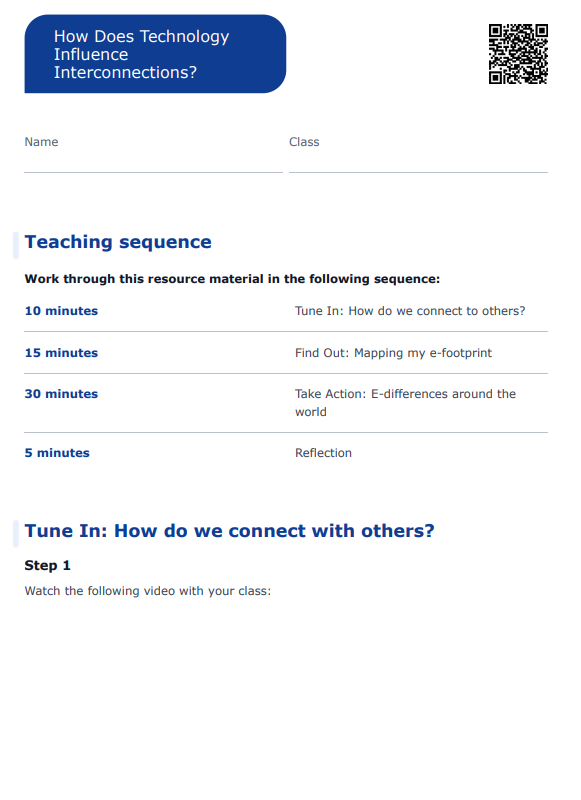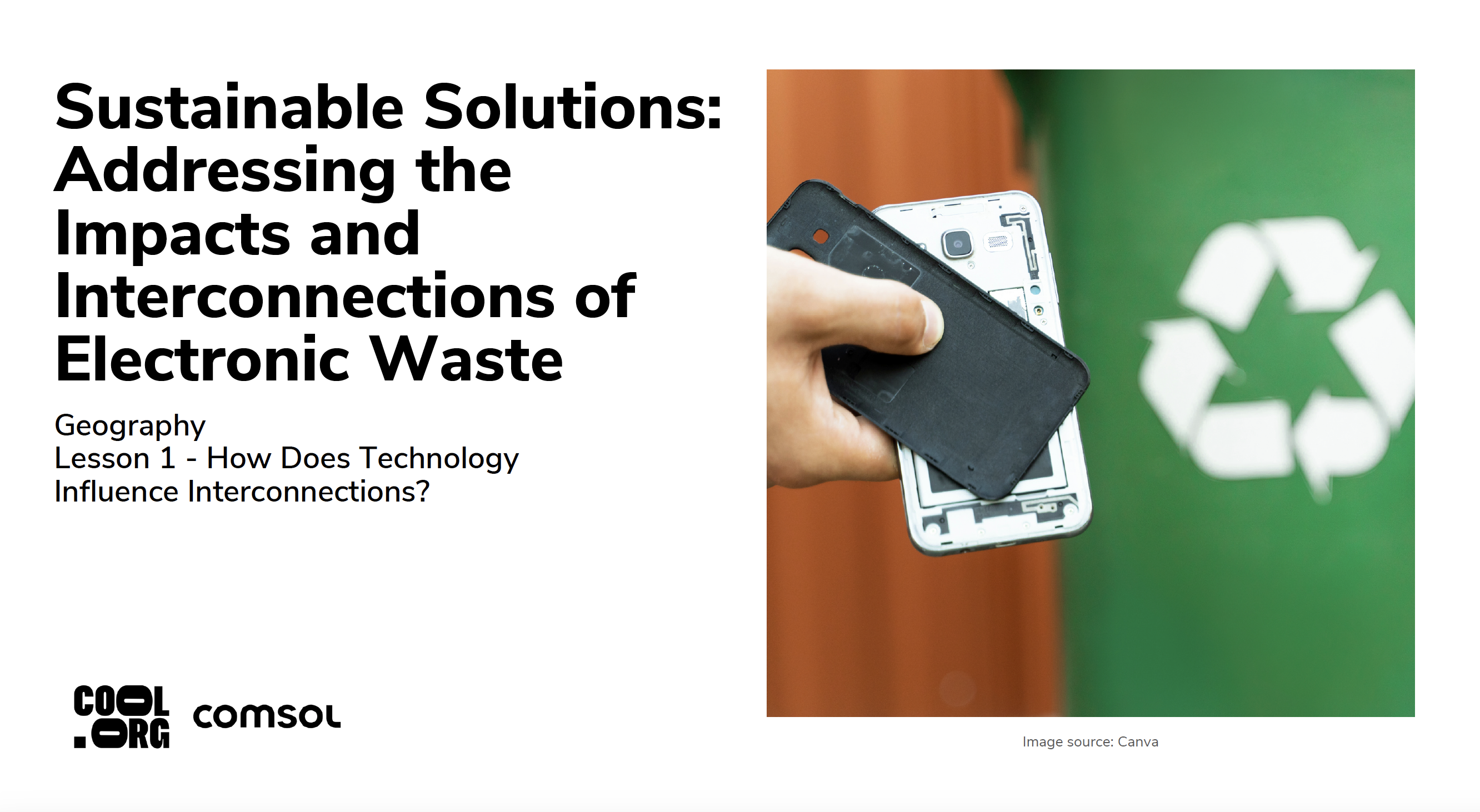Lesson summary
Students will explore the interconnection between people and places through the lens of technology, the ways in which humans have communicated, and how we can communicate now. Students will be introduced to the positive impacts of technology whilst also exploring the current issues of e-waste and the digital divide by comparing their e-footprints to other communities.
Learning intentions:
Students will...
- understand how technology influences interconnection between people and places and the different levels of access to technology people have around the world.
Success criteria:
Students can...
- understand what interconnection is and its global divide
- articulate how technology influences interconnections
- discuss the positive and negative effects of technology
- understand different levels of digital access globally.
Lesson guides and printables
Curriculum links
Select your curriculum from the options below.
Lesson details
Skills
This lesson is designed to build students’ competencies in the following skills:
- critical thinking
- communication
- digital literacy
- ethical understanding
- global citizenship
Curriculum Mapping
Australian Curriculum (v9.0) content description: Year 9 Geography
- the ways that places and people are interconnected with other places through trade in goods and services, at all scales AC9HG9K07
General capabilities: Literacy, Personal and Social Capability
Syllabus outcomes: GE4-3
Cross-curriculum priority: Sustainability
Relevant parts of Year 9 Geography achievement standards: Students analyse the interconnections between people and places and environments. They identify and explain how these interconnections influence people and change places and environments.
Level of teacher scaffolding: Low - Facilitation of class discussion and introducing students to Mapline tool.
UN Sustainable Development Goals
UN SDG 12: Ensure sustainable consumption and production patterns
- Target 12.5: By 2030, substantially reduce waste generation through prevention, reduction, recycling and reuse.
- Target 12.8: By 2030, ensure that people everywhere have the relevant information and awareness for sustainable development and lifestyles in harmony with nature.
Resources Required
- Device capable of presenting audio-visual recordings
- Student devices with internet access
- Student Worksheet
Additional Info

This Closing the E-Loop unit has been developed in partnership with Comsol, a manufacturer, importer and distributor of electronics, who use a step-by-step approach to sustainability to establish a sustainable, environmental and socially supporting ecosystem for technology products and services. A key pillar of Comsol’s overarching framework is education. They believe that knowledge-sharing about the electronic waste crisis, sustainability and closed-loop solutions for electronic products provide opportunities for society to speed up the transition to a circular economy.
You can access all expert interviews and video content created for this unit through Vimeo. If you would like more information about the main topics and areas covered by these interviews, we have categorised them to make them easier to find and use in whatever context you see fit!





Welcome back!
Don't have an account yet?
Log in with:
Create your free Cool.org account.
Many of our resources are free, with an option to upgrade to Cool+ for premium content.
Already have an account?
Sign up with:
By signing up you accept Cool.org's Terms and Conditions(Opens in new tab) and Privacy Policy(Opens in new tab).